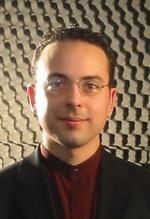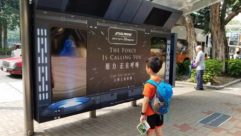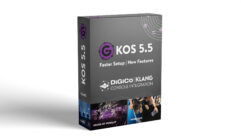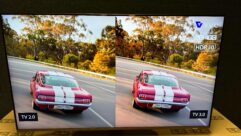

5-Minute Interview: Dr. Joseph Pompei
The award-winning innovator and founder of Holosonics in Watertown, Mass., blazed the trail for directional sound.
PRO AV:
You were at Bose a while back. What made you want to move on and develop new technology?
POMPEI: During my time at Bose, I learned a lot about loudspeakers and the loudspeaker industry in general. And they trained me well. But I was always looking for something more. What I saw was that loudspeakers had basically become commoditized and had met the end of their practical life—as far as true, new innovation went. But there were a lot of problems a loudspeaker could never overcome. These were really about control—control over where sound was, where it went, and how it was distributed. I realized that it was fundamentally impossible for loudspeakers to accomplish the control I thought was important. So with the encouragement of my former coworkers, I decided to strike out on my own.
PRO AV: Give us the elevator pitch: What is Audio Spotlight technology? How does it work?
POMPEI: Basically the technology excites the air with ultrasound, which naturally forms a tight narrow beam, and the air itself goes on to create the audible sound you hear via its inherent nonlinear properties. So it is literally sound out of thin air, or like making a hologram of a loudspeaker. The audible sound has propagation properties corresponding to that of the ultrasound, rather than what would normally come from a loudspeaker. So you get a tight, narrow beam of audible sound that you can shine like light. PRO AV: Why hasn’t anyone come up with this before? What is the history?
POMPEI: The technology’s closest relative was early work in underwater sonar back in the 1960s. Their goal was not increased directivity per se, but it was an interesting byproduct that had a fair amount of academic study. But it never caught on as a practical sonar method. In the early 1980s, some Japanese companies attempted to make a loudspeaker, but they abandoned it quickly when they couldn’t overcome huge problems with audible distortion and system practicality. I dug out their old papers, solved all the problems, and made a reliable, highperformance product.
PRO AV: Where is this technology typically being used?
POMPEI: In general, the technology is used to deliver sound in shared environments where quiet is important. Everywhere from office lobbies, retail digital signage, museums, trade shows, and doctors’ offices. Even homes use our technology to provide sound to a specific location, while preserving the quiet.
PRO AV: What might be a unique application of the technology?
POMPEI: Well for example in a retail environment, say a grocery store, this technology could change they way companies market products. They could use sound effects, for instance, instead of messages. A directional speaker in front of a Tide display could play nature sounds that have a desired effect or conjure up freshness, rather than resorting to things that say, “Buy Tide, buy Tide, buy Tide.”










